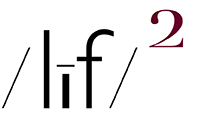(embiggenable)
(embiggenable)
OK. LET ME GET RIGHT TO THE POINT, re: my tit in a wringer wise - as I was engaged in this morning’s cumbobulation routine-coffee, morning sweet, newspaper, and cruising my regular rota of websites-I came across this:
“…the iPhone makes decent photographs for the Web and for texting to friends. It doesn't even do too badly for small prints…” ~ Mike Johnston
Johnston is a long-time diss-er of the iPhone as a picture making device. He believes it to be a device for “note-taking, immediate sharing, pretty colors”. “Serious” photography, not so much, if at all. OK. Fine. To each his own kettle of bias.
Re: Johnston’s bias: Johnston comes from the Camera Club School of Photography. That is, the critical mass of picture makers who believe that a picture is all about the depicted referent (re: the “right” kind of referent), with an occasional nod to “composition”, and, in the current picture making zeitgeist, that picture must be eye-bleedingly sharp, color saturated, with dynamic range to the max and made with a very “nice” gear.
While the preceding paragraph describes a top-tier characteristic of the CCSoP crowd, in this paragraph, is the characteristic that I believe to be the most defining propensity of the typical CCSoP picture viewer. As strange as it may sound / read, it is all about what your feet do when viewing a picture on a wall…it has been my experience, during gallery exhibitions of my pictures and that of others, that picture viewers fall into 2 categories - those whose feet propel them closer to a picture and those whose feet propel them backward from a picture.
The forward movers get closer in order to inspect a picture for its technical qualities, while the backward movers are more likely to be wanting a more complete overview of a picture in order to get a feel for what the picture is about. That is, That “something” that is beyond the depicted referent.
iMo, as simple as it might be, therein is the difference between the CCSoP crowd and the FASoP (Fine Art School of Photography) crowd. It illustrates the difference in what each crowd seeks / looks for in determining what is, iTo, a good photograph. Once, again let me write, to each their own. However…
…what gets my knickers in a twist, is the fact that Johnston, acting in his role as President of his camera club-preaching to the CCSoP faithful-actively dismisses the iPhone as a “serious” picture making device> a practice which, no matter how you choose to read it, must have the effect of discouraging those who are exploring the iPhone capabilities as a picture making device useful for more than just “note-taking, immediate sharing, pretty colors”.
Hint for those whose intention is to be part of, or be hovering around the edges of the FASoP. ANY picture making device that suits one’s vision is 100% perfect for the making of one’s pictures.
And, re: the iPhone and the absolute and misleading nonsense of “It doesn't even do too badly for small prints”. I print my iPhone made files at 24”x24”. Quite a number of those prints have hung on gallery walls-photo and Fine Art galleries-and homes. And, especially so in FA galleries, nobody gives / gave a crap about what device was used in their making. And, on few occasions when it was known that the pictures were made with an iPhone, the viewer thereof was quite simply amazed.
